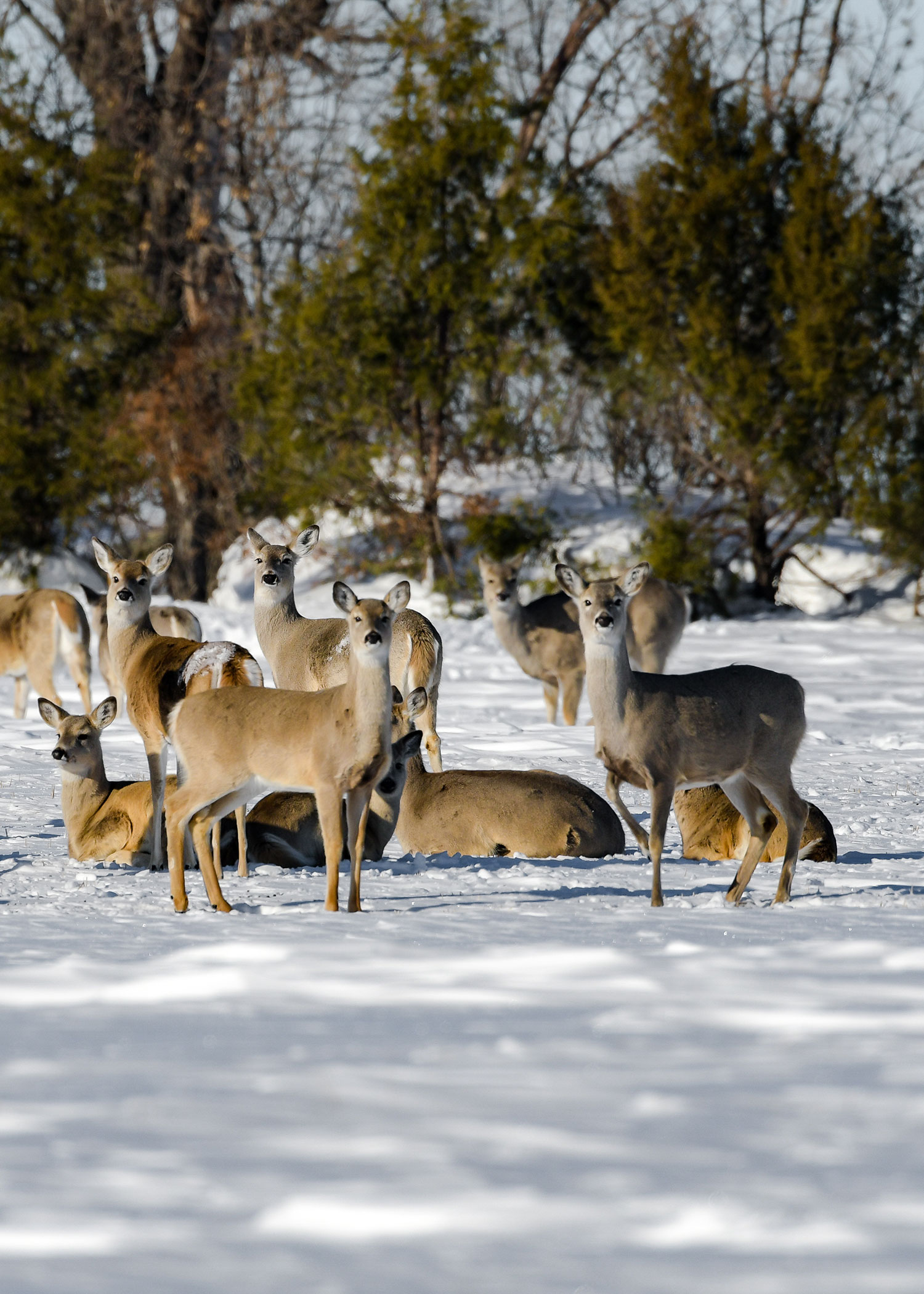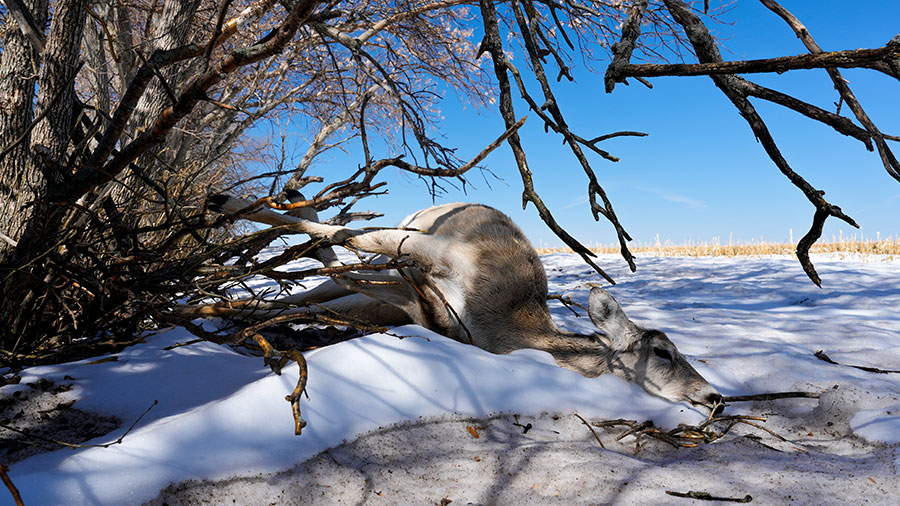Toll of a Tough Winter
Ron Wilson

State wildlife managers made available 53,400 deer gun licenses for 2023, nearly 11,000 fewer than 2022, making it the lowest tag total since 2016.
While this is not the kind of news hunters wanted to hear, the announcement made by North Dakota Game and Fish Department officials weeks prior to the June 7 lottery deadline came as no surprise following an ugly winter that hung around for half a year.
An untold number of deer died last winter from starvation or exposure as much of what little quality winter habitat there is on the landscape was uninhabitable because of all the snow. While there were reports of winterkilled deer across the state, some of the hardest hit areas extended from Bismarck east and south.
Casey Anderson, Game and Fish Department wildlife division chief, said some deer went into winter not in the best shape and didn’t stand much of a chance against a winter that showed up in early November and refused to give in to spring.
“Everything compounds itself when you talk about wildlife. Think back a couple of years when we had back-to-back years of pretty bad drought that we finally came out of last year about halfway through summer that was tough on animals,” Anderson said. “To really build up those fat reserves and things that carry an animal through winter, it takes exceptional habitat to do that, which we didn’t have.”
Wildlife managers rely on a host of things to determine the number of deer licenses to make available to hunters including, but not limited to, what game wardens and other staff are seeing in the field in winter, hunter harvest surveys and aerial surveys.
With plenty of snow on the landscape – 12 inches is needed to fly the surveys – Game and Fish personnel spent 251 hours in the air, starting in early January, counting deer over all survey areas encompassing 27% of the state. Observers also drove nearly 17,000 miles last winter to meet the pilots before ever going into the air.
“It was a long year to put it bluntly,” said Jason Smith, Department big game management biologist, Jamestown. “An airplane is a great office to have and provides a great view of the state, but it can get rigorous.”

Ideally, it’s best to fly when it’s not minus 30 and windy, but considering it’s the Northern Plains, you’d have to imagine that it’s seldom ideal.
Pilots fly at altitudes of 250-350 feet at speeds below 80 mph. Observers count all deer, but don’t classify them as buck, doe or fawn.
Smith said what they observed from their aerial offices over 6-plus weeks of survey time was discouraging. For example, they saw a 51% decrease in white-tailed deer and an 84% decrease in mule deer in the Wing-Tuttle area (hunting units 2J1 and 2J2) from Jan. 10 to April 7.
While Smith said big game biologists can’t discount that deer in the Wing-Tuttle area didn’t just move from Jan. 10 to April 7, swaying the large decline in deer tallied, it’s highly unlikely that’s what happened.
“When we do these surveys, we take waypoints so we can go back and see where these groups of deer were at,” he said. “And the reality of it is if they didn’t go anywhere from November to January, they definitely didn’t go anywhere from January to that April time frame, just based on the conditions on the ground.”
When Department personnel flew the last survey in early April in the Wing-Tuttle area, Smith said some of the deer were dead and just didn’t know it yet.
While it’s uncertain what tomorrow will bring, Smith said the one good thing is that winter, the likes of which we haven’t experienced in years, is behind us.
“We get a lot of help from people in the Department when it comes to aerial surveys, but it comes down to four big game biologists for the whole state of North Dakota trying to manage deer, trying to keep deer on the landscape to provide hunting opportunities,” he said. “And then you get a winter like this that comes along, and you come back into the Jamestown yard and see people unloading all these dead deer that they’ve picked up, and it’s just like ‘man alive.’”

